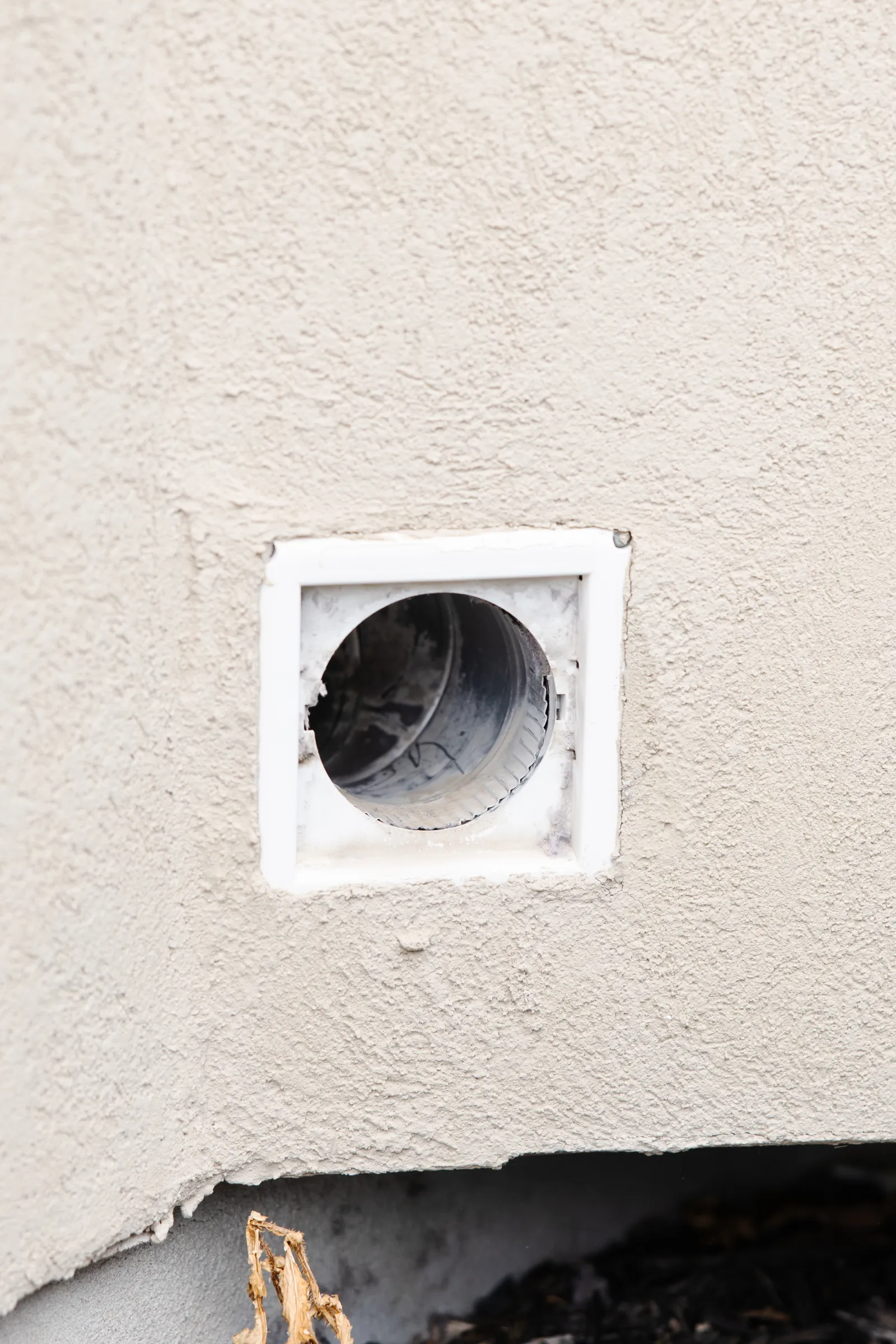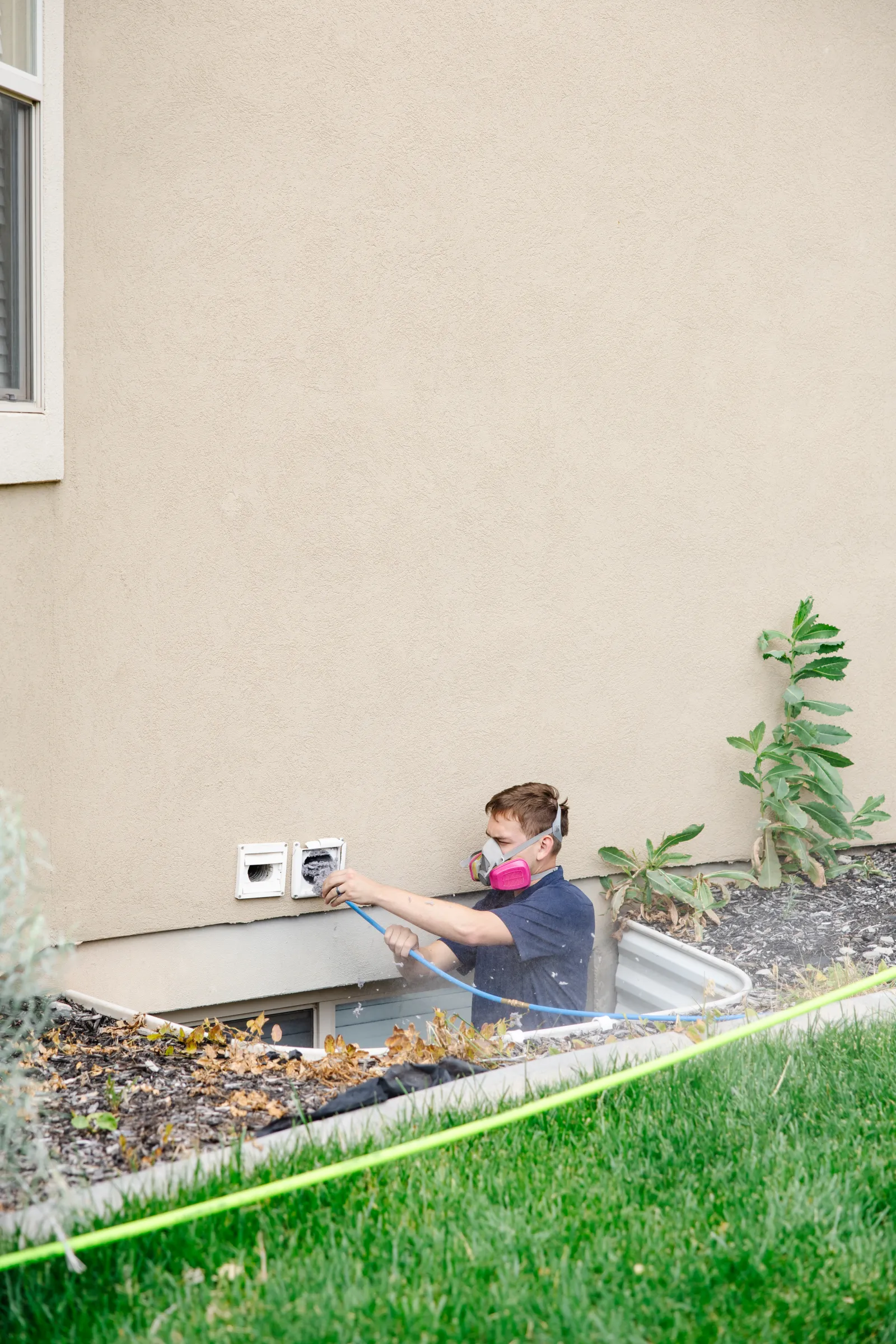Why Does a Dryer Need a Vent?
You probably heard or read somewhere you can use your dryer without venting. Before making your decisions, ask yourself, 'Why does a dryer need a vent?'
A vent is a crucial part of your dryer because it vents hot air (excess heat), captures debris, and filtrates moisture while your dryer dries blankets and clothes.
A dryer without a vent is vulnerable to moisture, lint, and heat accumulation, which could cause mold growth or a fire. A clogged vent also results in water in the dryer vent.
In this article, we will focus on the importance of vents, if it's okay to use a dryer without a vent, and more.
Read on.

Why Does a Dryer Need a Vent?
If you have seen a neighbor or a friend use their dryer without a vent, you might wonder, 'Why do I have to vent my dryer?'
The purpose of a dryer vent is to remove lint, hot air, and moisture during the drying cycle as your dryer dries towels, blankets, and clothes, among others.
A fan in the dryer pushes lint, moisture, and hot air out of the dryer while it's in operation, preventing mold growth or a fire hazard.
Can You Use a Dryer Without a Vent?
Technically speaking, a dryer can run without a vent hose, but it's not advisable as it's unsafe for you. Below are several reasons to avoid using a dryer without a vent.
Lint Buildup
When a dryer operates, it tumbles clothes in hot air, removing moisture. The hot air carries the lint shed, so the vent hose channels it outside your house.
Using the dryer without the vent causes lint buildup in your dryer, the exhaust path, and around the drum, causing clogs that result in a fire hazard.
Reduced Dryer Efficiency or Blown Internal Component
Venting helps in proper air circulation in the dryer, which helps it work efficiently. A lack of a vent causes your dryer to clog.
The dryer vent components may also overheat, resulting in the dryer's inefficiency. This results in extended clothes drying time or clothes not drying properly.
When the dryer overworks, it consumes more power, resulting in higher energy bills.
Also, when the dryers continuously overheat due to a lack of or poor venting, the motor and other components break down as they're not supposed to operate under constant high temperatures. This results in constant dryer breakdowns or pre-mature dryer replacement.
As a safety measure to end dryer fires, modern dryers feature a thermal cut-off fuse, which is a second safety fuse. It shuts down the heating system due to overheating.
When the exhaust air becomes too hot, the thermal fuse trips. For example, when the thermal fuse trips in gas dryers, the burner stops working to stop the dryer from heating.
When a thermal fuse blows, the drive motor in electrical dryers fails to start.
Mold Problems
Dryers dry clothes by removing moisture. Using a dryer without a vent causes this moisture to be released in the dryer or laundry room, resulting in increased humidity levels.
This causes condensation, which exposes your furniture, walls, and floors to damage due to mold growth.
Toxic Gas
A clogged exhaust vent system, especially in gas dryers (more on gas dryers later), causes carbon monoxide buildup in your home. This odorless gas is fatal.
Poor Air Quality
Lack of venting results in poor indoor air quality due to dust, debris, and lint buildup in the dryer. One of the ways to know that your vent is clogged is when you start seeing a bird in the dryer vent!
When birds build in the vents, they cause more debris and lint buildup, resulting in poor air quality.
This could be a health threat, especially for family members with allergies due to insufficient air circulation.
The dryer vent hose releases a suction force that improves airflow by removing lint from the clothes and expelling it outside the house.
Why Are Dryers Vented Outside?
Dryers are vented outside to emit carbon monoxide, a toxic gas, outside the home. Most dryers vented outside are gas-powered to protect the family from this toxic gas.
The outdoor vent connects to the dryer through a hose that carries lint, hot air, and moisture to the exterior vent attached to one of the home's exterior walls.
That said, we also have indoor dryer vents.
Most electric dryers use an indoor vent. Instead of releasing the steam into the air, electrical systems trap it in a water filtration system. At the end of each dryer cycle, manually empty the filtration system.
Condominium units and apartments may lack an outer exterior wall; indoor venting may be the only option.
These indoor vents are fixed on an interior wall featuring filters for trapping lint and other debris. The hot, moist air is pumped back to the dryer/laundry room.
So, indoor venting should only be done in electric dryers or ductless venting systems, not gas-powered ones.
Do Electric Dryers Need to Be Vented?
Electrical dryers use electricity to dry clothes. You can use them without vents because electric dryers don't release carbon monoxide but could overheat and malfunction.
Electrical dryers without a vent could also wear quickly. If moisture and lint build up in the electric dryer, mold could grow in the washing room, or there could be a fire. It's not worth the risk!
Do All Dryers Need a Vent?
Based on our discussion in this article, all dryers need a vent because they could all clog due to lint buildup. Lint accumulation also results in fires. Moisture buildup results in mold growth, which is a health hazard.
Dryer vents without vent overwork, resulting in quick wear and excessive energy consumption.
So, do all clothes dryers need a vent? The short answer is yes; without vents, they become a health and safety hazard.
Tips for Proper Venting
When venting your home, there are key things to keep in mind:
Shorter, straight vent hoses are better; they allow air to flow properly in the system, increasing the efficiency. Long, bent vents lower air flow, resulting in inefficiency or constant system breakdown.
Just as cleaning the lint trap regularly is critical after each cycle to prevent lint buildup, cleaning the dryer vent is equally key. Lint buildup in the vent results in dryer vent fires. You don't want that!
Avoid directing the lint and hot air from the dryer into your crawlspace or attic; direct it outside your home.
Regularly inspect the dryer vent system for kinks or breakages and replace it when necessary.
Have your dryer vent cleaned professionally to prevent debris buildup or breakdown after cleaning it yourself.

Why Do You Need to Vent a Gas Dryer?
Besides preventing lint, moisture, and heat accumulation in the dryer, vents are crucial in gas dryers to prevent carbon monoxide buildup. Carbon monoxide buildup in a home can be poisonous and, in extreme cases, could result in death.
A vent hose safely vents carbon monoxide outside of your home.
Keep the vent clog-free and have a carbon monoxide detector to stay safe.
Get Professional Dryer Vent Cleaning Services from Zerorez!
Dryer vents are critical in preventing vent fires by filtering hot air and preventing moisture and lint buildup.
Without a vent, you're at risk of health and safety hazards. It's not debatable; you must clean the dryer vent for a safe home.
That's where we come in. At Zerorez, we offer professional dryer vent cleaning services.
You can call for a free quote or contact one of our Zerorez locations for cleaning services.
